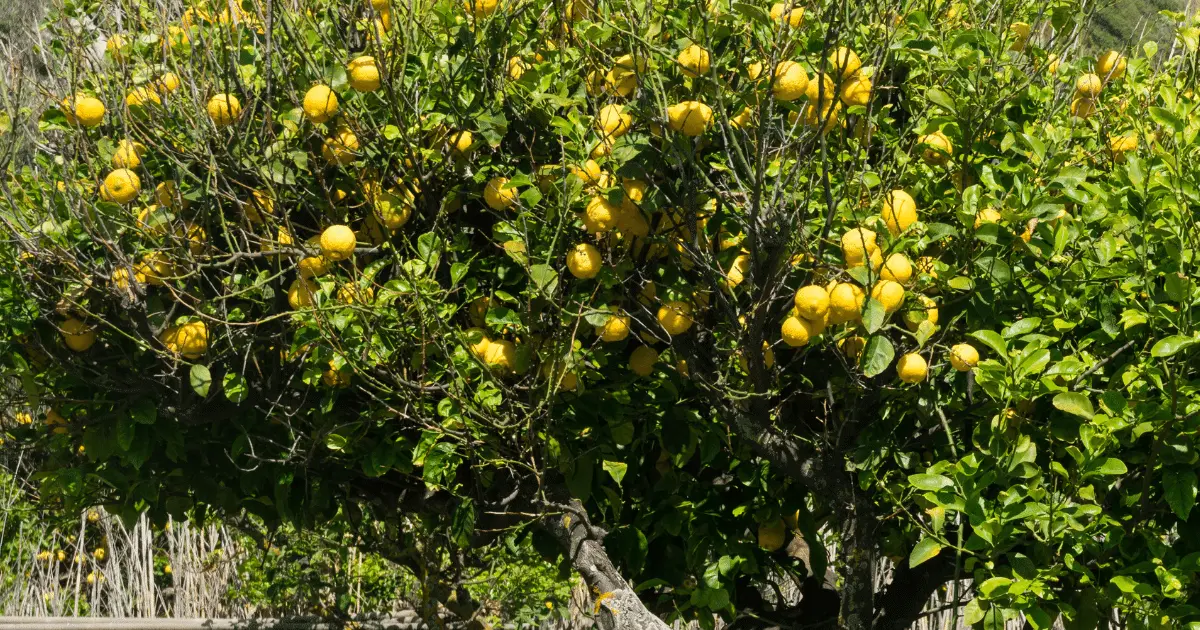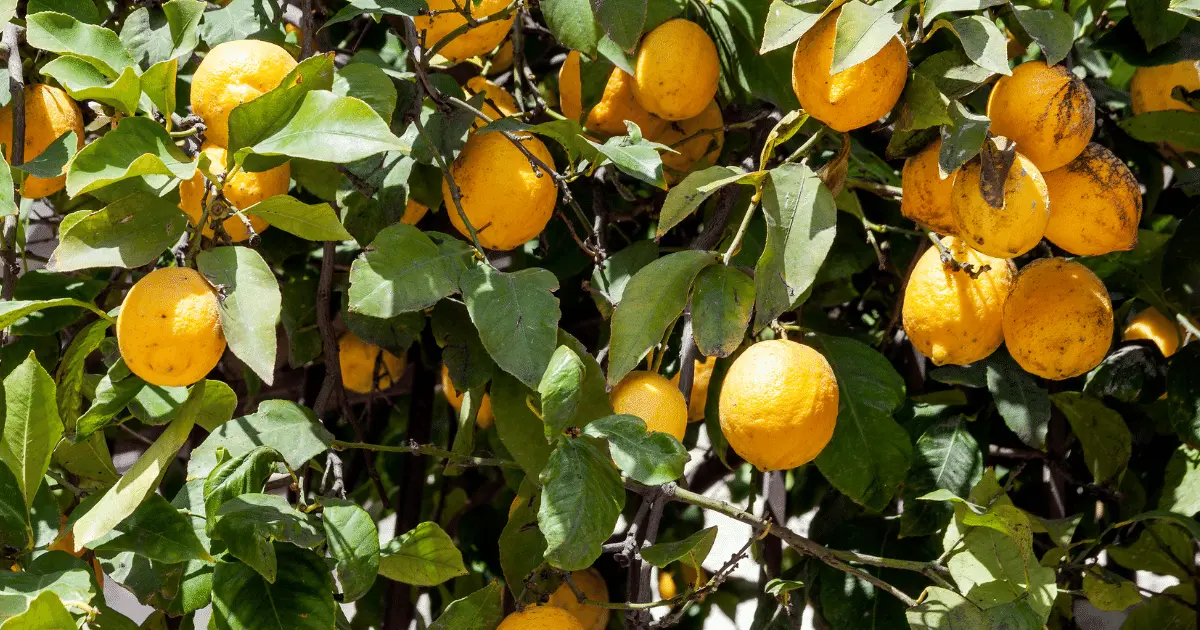With the potential to yield one of your favorite fruits and a gorgeous appearance, as well as a delightful aroma, lemon trees are a great way to add brightness to your home and garden. Lemon trees need to be deeply watered once a week, and as the leaves age, they will naturally curl.
At the end of the season, generally in the fall and winter, leaves naturally curl. Therefore, if you notice some curled leaves on your lemon tree, they are likely old. However, there are other reasons why leaves curl, which could cause the plant to die.
How to Avoid Curling of Leaves in Lemon Trees

Overwatering and a lack of sunlight are two critical contributors to lemon plant leaf curling. Place the plant where it can receive enough sunlight and water it 1-2 weekly.
The Reason Why Lemon Tree Leaves Curl Is
Citrus Virus
Lemon tree leaves may curl and eventually fall off due to citrus disease. Fungal diseases that cause citrus leaves to curl, lose colour, and die can affect them. The most frequent of these are bacterial blasts.
Overwatering
The most typical symptoms of overwatered lemon trees are discoloration and curling. Not just lemon trees can experience overwatering-induced leaf curling; all kinds of plants can also have this issue. When a lemon plant is overwatered, it receives too much moisture regularly, even when it is not required. Additionally, roots may start to rot when it rains a lot because of the extra water in the soil.
Overwatered plants will begin to wilt and droop. The best option of action is to ensure that your plant receives just enough water—not too much. Since you can’t see the roots, the effects of too much water in the soil first manifest themselves in the foliage.
Using Too Little Water
Watering a lemon tree too sparingly prevents water from penetrating and reaching the soil and roots, which causes the leaves to curl. If the soil’s surface looks very dry, underwatering is easy to spot.
Minimal Humidity
Many tough plants struggle with low humidity; when the humidity in your home drops below a particular point, it can be challenging for plants to prevent their leaves from curling. This is because the plant’s leaves depend on water vapor to keep them solid and alive.
Poor Nutrition
Another major problem that can affect any plant is a lack of nourishment, and lemon tree needs enough nutrients else leaves will curl up.
They will surely fall or eventually die as they wither. If you see your plant’s leaves curling, you can assist them in recovery by giving them more fertilizer or frequent watering.
Water Quality
Because of the water’s poor quality, plants’ leaves are not growing well and appear to curl inward or outward. When contaminated water enters the root, the green leaves of the lemon plant turn dark, curl, and drop off.
Change the water you are using if you see leaves curling and you suspect dirty water.
Too Much wind
When lemon trees are affected by too much wind, it increases the rate of curling, and eventually, leaves curl and drop.
Pest
Curled lemon leaves can also be caused by insects, which are a prevalent problem because they frequently attack lemon plants.
Can You Fix The Curled Leaves On Lemon Trees?

Yes, you can stop the leaves on your lemon tree from curling if you identify the cause of the problem before the leaves start to fall off.
There is a potential that it will recover after little harm, but if the damage is serious, it may not. The curling leaves of the lemon plant can be fixed if only the damage is not severe following these rules.
Eliminate Citrus Diseases
Krus blasts and botrytis can be avoided by cultivating citrus trees with proper wind protection and promptly removing any dead or diseased branches.
Correct Overwatering
Reduce the frequency of watering as a first step in protecting the lemon tree from overwatering. Never water the lemon tree before the soil is 2 to 3 inches dry.
Repair The Drought-Damaged Lemon Plant
Potted plants dry out more quickly, especially when hit by direct sunlight, so it is advisable to water your lemon plant frequently.
Lemon trees enjoy the soil being slightly dry.
Adapt Humidity
Lemon trees need close to 50% humidity; if your home’s humidity level drops too low, you should give your plants more water to stop them from curling. To prevent leaves from wilting, you should also spray water on the soil or provide water to it.
Fix Nutritional Problems
Magnesium shortages are the most frequent nutrient inadequacies that cause lemon tree leaves to curl and die.
Apply fertilizer for citrus; there are numerous quality items on the market, but check the fertilizer’s ingredients to be sure it includes nitrogen, potassium, and phosphorous and don’t forget it must contain magnesium.
Avoid Using Polluted Water
Change your plant’s water to fix the problem, and it will soon begin to recover. You should also remove the plant’s curled and damaged leaves.
Try To Protect The Tree From Strong Winds
Covering lemon trees with frost burlap will help keep the leaves from freezing and is one technique to protect them from cold weather.
During the winter, you may bring your lemon tree inside and put it in a bright position close to a window where it will be shielded.
Your lemon tree’s leaves will wilt and die if exposed to temperatures below freezing; if this occurs, you can remove the harmed leaves.
Utilize Pesticides
Use a magnifying glass because it is challenging to notice the mites with the unaided eye. White, reddish, or brownish microscopic insects may be mites if you observe them.
Treat lemon plants using citrus pesticide.
Guidelines For Plant Repotting
Like any other plant, repotting your indoor lemon tree is very easy. To do it correctly, adhere to these steps:
- Get a pot that is larger than the one that currently holds your lemon tree.
- Add potting soil to about half of your pot.
- Add moisture by watering.
- Dislodge the dirt from around the root ball and the pot.
- Remove the base of your tree.
- Look closely at the roots and remove those swallowing the root ball.
- Set your tree on the new pot’s soil.
- Give your lemon tree water.
- Position the pot in an ideal location with adequate sunlight.
How Can You Maintain A Healthy Lemon Tree?
You can fertilize your tree once a month by planting it in slightly acidic soil. Your potted lemon tree needs up to 5 hours of sunlight daily, so keep it in a warm, well-lit area. Also, water your lemon plant twice a week.
Depending on the cause, you can cease the curling of lemon leaves just before the entire tree is jeopardized. Lemon trees can curl for a variety of reasons.
Lemon trees are easy to care for indoors and add a beautiful scent to your home. You can care for a healthy lemon tree indoors; whether you’re an expert or a beginner, you have to observe and take care of your lemon plant.
